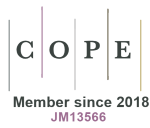Coronavirus and environment: a challenge for the planet and the health
DOI:
https://doi.org/10.33393/gcnd.2020.2134Keywords:
Air pollution, Coronavirus, Environment, Spillover, Viral infectionAbstract
In late December 2019, some patients were hospitalized with an initial diagnosis of pneumonia of unknown etiology. These patients were epidemiologically linked to a wholesale market of seafood, wild animals and meat located in Wuhan, Hubei province, China. Acute respiratory disease caused by a new Coronavirus SARS-CoV-2, formerly known as 2019-nCoV, afterwards as Coronavirus disease 2019 (COVID-19), spread throughout China and received the attention of the entire world. Analysis of the genomic sequence of COVID-19 showed 88% of identity with two bat-derived severe acute respiratory syndrome-like Coronaviruses. Illegal and sustainable wildlife trade is the second largest direct threat to species after habitat destruction. Each year, hundreds of millions of plants and animals are captured or collected in the wild to be sold as food, pets, medicines, ornaments and for a variety of other reasons. Even the climate crisis could offer dangerous scenarios in addition to another fundamental chapter of the environmental pillar which is the one concerning air quality. There is a solid scientific literature which correlates the incidence of viral infection cases with concentrations of atmospheric particulate matter (e.g. PM10 and PM2.5). Despite the current regulations, which limit the levels of certain atmospheric pollutants, there are still numerous negative health effects deriving from exposure to these agents. However, it can be said that chronic air pollution, such as peaks of concentration of fine dust and other pollutants, acts as a pejorative factor in cases of epidemics. (GCND_planet)
References
- Bogoch A, Watts A, Thomas-Bachli A, et al. Pneumonia of unknown etiology in Wuhan, China: potential for international spread via commercial air travel. J Travel Med. 2020;27(2).
- Lu H, Stratton CW, Tang YW. Outbreak of pneumonia of unknown etiology in Wuhan China: the mystery and the miracle. J Med Virol. 2020;92(4):401-2.
- Guo Y, Cao Q, Hong Z, et al. The origin, transmission and clinical therapies on coronavirus disease 2019 (COVID-19) outbreak – an update on the status. Mil Med Res. 2020;7(1):11. https://doi.org/10.1186/s40779-020-00240-0.
- Li Q, Guan X, Wu P, et al. Early transmission dynamics in Wuhan, China, of novel coronavirus-infected pneumonia. N Engl J Med. 2020;382:1199-207.
- Huang CY, Wang Y, Li X, et al. Clinical features of patients infected with 2019 novel coronavirus in Wuhan, China. Lancet. 2020;395:497-506.
- Wan Y, Shang J, Graham R, et al. Receptor recognition by novel coronavirus from Wuhan: an analysis based on decade-long structural studies of SARS. J Virol. 2020;94(7):e00127-20.
- Munster VJ, Koopmans M, Van Doremalen N, et al. A Novel Coronavirus Emerging in China – Key Questions for Impact Assessment N Engl J Med. 2020;382(8):692-4.
- Woolhouse ME, Gowtage-Sequeria S. Host range and emerging and reemerging pathogens. Emerg Infect Dis. 2005;(11):1842-7. http://www.ncbi.nlm.nih.gov/pmc/articles/PMC3367654/pdf/05-0997.pdf.
- Peeri NC, Shrestha N, Siddikur Rahman MD, et al. The SARS, MERS and novel coronavirus (COVID-19) epidemics, the newest and biggest global health threats: what lessons have we learned? Int J Epidemiol. 2020;dyaa033. https://doi.org/10.1093/ije/dyaa033.
- Ciencewicki J, Jaspers I. Air pollution and respiratory viral infection. Inhal Toxicol. 2007;19(14):1135-46.
- Cui Y, Zhang Z, Froines J, et al. Air pollution and case fatality of SARS in the People’s Republic of China: an ecologic study. Environ Health. 2003;2(1):15. https://doi.org/10.1186/1476-069X-2-15.
- Chen G, Zhang W, Li S, et al. The impact of ambient fine particles on influenza transmission and the modification effects of temperature in China: A multi-city study. Environ Int. 2017;(98):82-8.
- Arnold C. Disease burdens associated with PM2.5 exposure: how a new model provided global estimates. Environ Health Perspect. 2014;122(4):A111.











